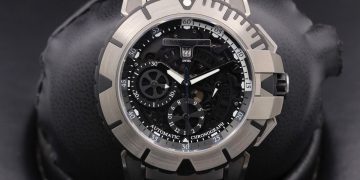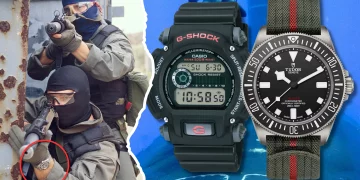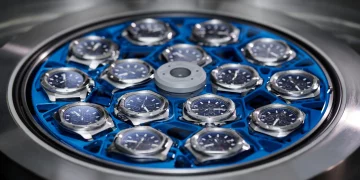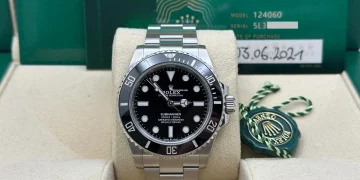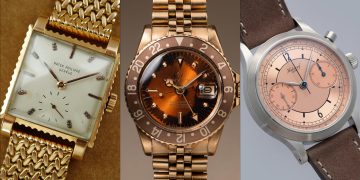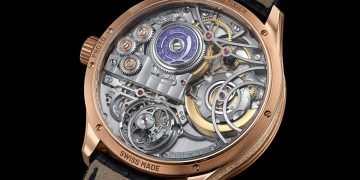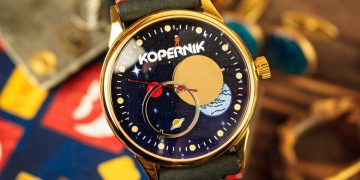Breitling, a Swiss luxury watch brand established in 1884, is known for its long-standing connection to the aviation world. From its early days of creating aviation-specific timepieces to its present-day innovations, Breitling’s flying watches have become synonymous with precision, technology, and functionality. But what truly sets these timepieces apart in an industry dominated by mechanical engineering and high-end craftsmanship? How does Breitling seamlessly blend traditional Swiss watchmaking with cutting-edge technology to create timepieces that not only meet the high demands of aviation but also push the boundaries of horological innovation?
In this in-depth article, we’ll explore the intricate craft and advanced technology behind Breitling’s flying watches. Through detailed examination of the brand’s design philosophy, movement technology, materials, and unique features, we will uncover what makes Breitling’s flying watches the epitome of both heritage and modern engineering. This article will also discuss the synergy between craftsmanship and technology that makes these watches stand out in a crowded luxury watch market.
1. The Legacy of Aviation in Breitling’s Craft
Before diving into the specific technologies and manufacturing processes, it’s essential to understand the foundation of Breitling’s aviation connection. Breitling’s history is intrinsically tied to the development of aviation, and its watches have been trusted by pilots for nearly a century.
a. The Birth of the Aviator’s Watch
Breitling’s aviation legacy dates back to 1936 when the brand introduced the Chronomat—a timepiece designed specifically for pilots. Featuring a rotating bezel with a tachymeter scale, the Chronomat was not only a chronograph but also a tool for calculating speed and distance, which were vital functions for aviators in the early days of commercial and military aviation.
However, it was the launch of the Navitimer in 1952 that cemented Breitling’s position as a leader in aviation watches. The Navitimer, with its iconic slide rule bezel, enabled pilots to perform critical flight calculations, such as fuel consumption and speed, without the need for external instruments. This was the watch that revolutionized aviation timekeeping, offering both function and precision in a wearable format.
b. The Pilot’s Watch as a Tool
Breitling’s design philosophy has always revolved around creating tools that serve a functional purpose, particularly for those in the aviation industry. This utilitarian approach shapes everything from the readability of the dials to the movement and materials used in the timepieces. Unlike other luxury watches, which might prioritize aesthetics or style over function, Breitling’s flying watches aim to optimize every aspect of the watch for practical use, ensuring that pilots can rely on them in the most challenging environments.
The demand for a timepiece that can withstand the pressures of flight and deliver precise information led Breitling to become a favored choice for military pilots, astronauts, and commercial aviators. In fact, many of their models are still used today by aviation professionals around the world.
2. The Craft Behind Breitling’s Flying Watches
The art of watchmaking at Breitling is founded on a legacy of meticulous craftsmanship. While modern technology plays a pivotal role in the precision and accuracy of their watches, the underlying techniques and attention to detail in their manufacturing process still rely on age-old Swiss watchmaking traditions.
a. Mastering Movement Technology
At the heart of every Breitling flying watch is its movement, which is the mechanism responsible for keeping time and powering the various functions of the watch. While many luxury brands rely on third-party suppliers for their movements, Breitling has developed a range of its own in-house calibers, each designed for maximum precision, durability, and efficiency.
Breitling Caliber 01 is one of the most renowned in-house movements used in their aviation watches. A self-winding chronograph movement, Caliber 01 is known for its remarkable accuracy and robust construction. The movement is COSC-certified, meaning it has passed rigorous tests to ensure that it meets the highest standards of chronometric precision.
Breitling’s in-house movements are an integral part of the brand’s commitment to offering precision tools for aviation professionals. By creating their own movements, Breitling ensures that each timepiece is optimized to meet the specific needs of pilots, offering improved reliability and performance in the cockpit.
b. Materials and Durability
Breitling’s dedication to craftsmanship extends to the materials used in their flying watches. As aviators require watches that can withstand extreme conditions, Breitling utilizes cutting-edge materials that offer superior durability without compromising on comfort or style.
- Stainless Steel: Many Breitling flying watches are constructed using high-grade stainless steel, which offers durability and corrosion resistance while maintaining a premium finish.
- Titanium: For pilots who need a lightweight watch, Breitling incorporates titanium into certain models. Titanium is not only light but also incredibly strong, making it ideal for those who spend long hours in the air.
- Ceramic: Some of Breitling’s more modern pieces, such as the Breitling Chronomat B01 42 and the Super AVI collection, incorporate ceramic in their bezels. Ceramic is known for its scratch resistance, ensuring that the watch retains its pristine look even after exposure to harsh conditions.
- Sapphire Crystal: All Breitling flying watches feature scratch-resistant sapphire crystal to protect the dial. This material is chosen for its clarity and durability, providing clear visibility of the time and features even after years of use.
c. Dial Design and Legibility
In aviation, readability is paramount, as pilots often need to check the time and perform calculations in challenging conditions. Breitling’s flying watches feature large, clear dials with bold numerals, markers, and hands to ensure that the time is legible at a glance.
For example, the Navitimer features large, bold hour markers and a chronograph scale that is easy to read, even under low-light conditions. The inclusion of contrasting sub-dials ensures that the user can quickly read elapsed time or other functions without confusion.
The dial design is also structured for multi-functionality, incorporating features like the slide rule bezel, which enables pilots to perform complex calculations while keeping the watch easy to read. Each function on the dial has a clear purpose, and the overall design is tailored to be a user-friendly tool in the cockpit.

3. Cutting-Edge Technology in Breitling’s Flying Watches
While the craftsmanship behind Breitling’s flying watches is rooted in traditional Swiss watchmaking techniques, the brand has also embraced modern technology to enhance the functionality and performance of its timepieces.
a. The Slide Rule and Chronograph Functions
One of the standout features of Breitling’s flying watches is the slide rule, a rotating bezel that allows pilots to perform essential flight calculations directly on their wrist. The slide rule’s design was first introduced in the Navitimer in 1952, and it remains one of the brand’s signature features today.
The slide rule can perform a wide range of calculations, including:
- Speed/Distance Calculations: The slide rule can help determine the speed of an aircraft based on time and distance traveled.
- Fuel Consumption: Pilots can use the slide rule to calculate fuel consumption, ensuring that they have enough fuel for the entire flight.
- Altitude and Rate of Climb: By using the slide rule, aviators can also calculate their altitude and rate of climb during the flight.
The chronograph feature in Breitling flying watches, which allows pilots to measure elapsed time, is another essential technology. It can be used to time specific events, such as fuel burn or flight time, allowing pilots to track critical data in real-time. The chronograph is highly accurate, ensuring that time measurements are precise down to the fraction of a second.
b. Advanced Movements: The Breitling Caliber 04
As mentioned earlier, Breitling’s in-house movements are at the heart of their timepieces. One of the most advanced movements in their arsenal is the Breitling Caliber 04, a self-winding chronograph movement that features a manufacture-based chronograph module and a long power reserve of 70 hours.
The Caliber 04’s integrated chronograph function allows for precise timing of flight events, and its robust construction ensures long-lasting performance, even under extreme conditions. The movement also features a date function, small seconds sub-dial, and hour and minute counters, all of which are essential for aviators to track flight data accurately.
c. The Breitling Emergency: A Lifesaving Innovation
One of the most notable technological innovations Breitling has introduced is the Breitling Emergency, a watch equipped with an emergency distress beacon. This model is a prime example of how Breitling integrates life-saving technology with traditional craftsmanship.
The Emergency watch has a built-in dual-frequency distress beacon that can be activated in case of an emergency. When triggered, the beacon sends a distress signal that can be picked up by search-and-rescue teams. This technology has saved countless lives in remote or inhospitable environments, including pilots and adventurers who find themselves in distress during flight or expeditions.
d. Smartwatch Technology in Traditional Designs: The Breitling Exospace
In addition to the classic mechanical models, Breitling has also embraced modern smartwatch technology. The Breitling Exospace B55 is an example of the brand’s innovative integration of traditional watchmaking with cutting-edge digital technology. The Exospace B55 offers features such as:
- Bluetooth Connectivity: The watch can sync with a smartphone app, allowing users to access flight data and additional features remotely.
- Flight Time Recording: The Exospace B55 can record flight times and provide real-time feedback, such as fuel consumption and altitude, all through its digital interface.
While still maintaining Breitling’s signature design elements, the Exospace B55 demonstrates how the brand is merging modern smartwatch capabilities with its traditional roots in aviation watchmaking.
4. Conclusion: The Synergy Between Craftsmanship and Technology
Breitling’s flying watches are a testament to the brand’s ability to marry traditional craftsmanship with cutting-edge technology. From the legacy of the Navitimer and Chronomat to the groundbreaking Emergency and Exospace B55 models, Breitling continues to set the standard for precision, functionality, and innovation in the world of aviation timepieces.
The brand’s commitment to producing reliable, durable, and technologically advanced timepieces for pilots is evident in every aspect of their watches. Whether it’s through the in-house movements, the use of high-tech materials, or the integration of life-saving features like the Emergency distress beacon, Breitling has earned its place as a leader in both traditional watchmaking and modern horological technology.
By combining the best of both worlds—time-honored craftsmanship and cutting-edge innovation—Breitling continues to redefine what a flying watch can be, offering aviation professionals and watch enthusiasts alike the perfect tool to navigate the skies.



